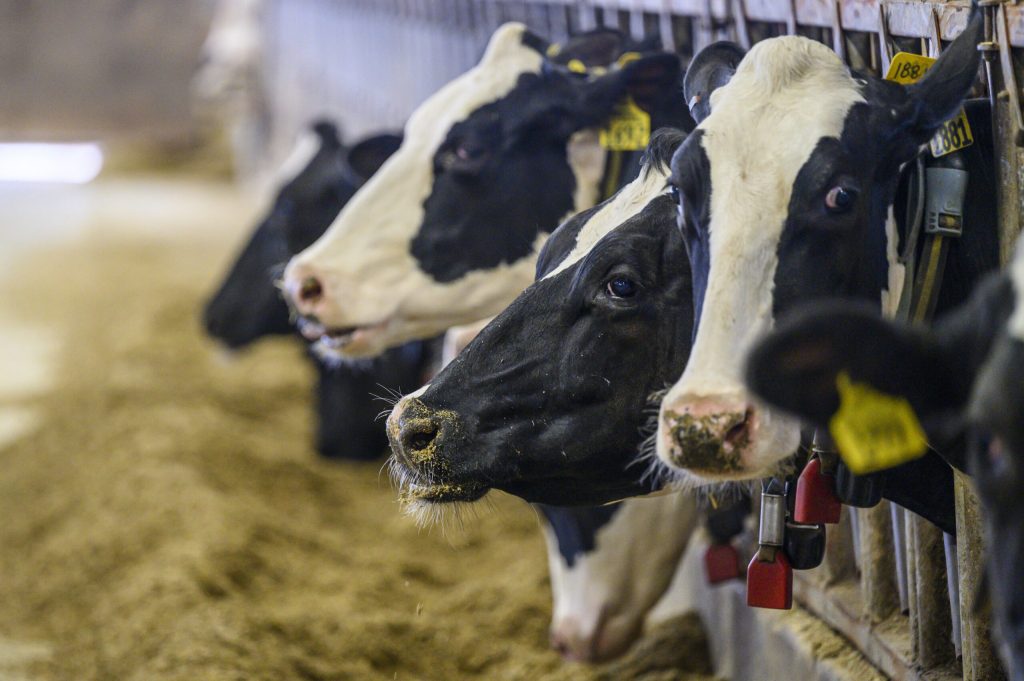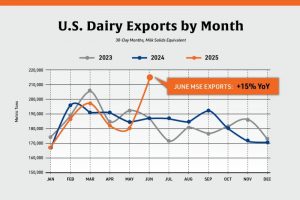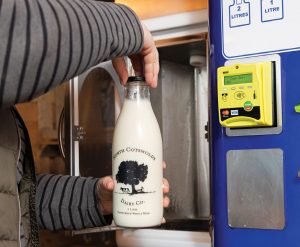
The U.S. Department of Agriculture’s Agricultural Marketing Service’s final decision regarding proposed amendments to the pricing formulas governing all 11 Federal Milk Marketing Orders, released Nov. 12, 2024, largely mirrors the recommended decision issued in July 2024. But it includes adjustments driven by USDA’s assessment that new comments and evidence justified changes – many of which appear to come at the expense of dairy farmers.
As the industry awaits the results of the USDA referendum, stakeholders are evaluating how the changes could impact milk pricing, market dynamics and profitability. This Market Intel breaks down the differences between the recommended and final decisions, estimates their pricing implications and highlights key considerations for dairy farmers.
Background
The USDA’s final Federal Milk Marketing Orders decision stems from a years-long effort to modernize milk-pricing formulas and address issues that have emerged since the previous major overhaul went into effect in 2000. Following testimony presented during a 49-day national hearing – August 2023 to January 2024 – in Carmel, Indiana, and subsequent post-hearing briefs, the USDA released its recommended decision in July 2024. That recommendation proposed changes to pricing formulas, including updates to milk-composition factors, surveyed commodity products, make allowances, the Class I base-price formula and Class I differentials. Those amendments aimed to address inefficiencies and to better align pricing structures with market realities. The proposals drew mixed reactions from stakeholders due to their varied regional and operational impacts.
The final decision introduces changes to three amendments presented in the July recommended decision – involving implementation of increased composition factors, increased make allowances and adjusted Class I differentials. The remaining amendments were presented unchanged in the final decision.
1. Delayed Implementation of Composition Factors
In its recommended decision the USDA increased the protein, other solids and total – nonfat solids – composition factors but proposed a 12-month delay in their implementation. That meant that while all other adjustments would take effect when the new order regulations are implemented, the increases in composition values would be postponed for a year. The USDA stated the delay would have allowed producers who use risk-management tools, such as Chicago Mercantile Exchange futures and Dairy Revenue Protection insurance, to adjust their positions and mitigate potential financial harm from regulatory changes.
In its final decision, the USDA shrank the 12-month delay in composition-factor implementation by half, to six months. The USDA argued the change was made to balance the needs of producers using risk-management tools with the urgency of aligning prices with market conditions.
The American Farm Bureau Federation opposed the original delay, arguing that it unnecessarily prolongs the period during which producers are undercompensated for the better-value milk they are already delivering. A static analysis of class-price formulas from 2020 to 2023 indicates that updating composition factors would have generated an average cumulative annual benefit of $220 million for producers – meaning the delay could cost dairy farmers more than $100 million during the first six months alone. The reduction from 12 months to six months is an improvement but it still deprives farmers of revenue during a time when fair compensation should be prioritized.
2. Increases to Make Allowances
The USDA’s final decision introduced additional increases to all four make allowances beyond those in the recommended decision, exacerbating large negative impacts to dairy-farmer milk checks. Make allowances provide for the costs incurred by processors to convert raw milk into finished products – such as cheese, butter, nonfat dry milk and dry whey. Those allowances are deducted from the value of raw milk before calculating the prices paid to farmers. Increased make allowances generally result in a reduced pay price to dairy farmers, all else being equal.
In addition to the increases outlined in the recommended decision, the USDA added a $0.0015-per-pound marketing-cost factor into the make allowances for all four commodities. The addition reflects the USDA’s determination that post-packaging expenses – such as warehousing, transportation and maintaining sales staff – are integral to the manufacturing process and had been inadvertently excluded from the recommended decision.
In addition to the $0.0015 increase in make allowances across all commodities, the USDA revised the methodology for calculating the nonfat-dry-milk make allowance. The recommended decision initially relied on an average of University of Wisconsin’s Mark Stephenson’s 2021 cost of processing survey and on 2016 data from the California Department of Food and Agriculture, reflecting California’s significant role in nonfat-dry-milk production. But stakeholders raised concerns about the outdated 2016 data and about methodological issues with the 2021 survey. In response, the USDA substituted the 2016 data with Stephenson’s updated 2023 reduced-cost processing-survey results. That change increased the nonfat-dry-milk make allowance by 1.1 cents, even before the addition of the marketing-cost factor.
If the final increases in make allowances, butterfat-recovery factor and butterfat-yield factor in cheese had all been implemented between 2019 and 2023, they would have reduced Class I prices by an average of 87 cents per hundredweight; Class II prices by an average of 85 cents per hundredweight; Class III prices by 90 cents per hundredweight; and Class IV prices by 85 cents per hundredweight.
Those final adjustments represent additional reductions compared to the USDA’s recommended decision of 6 cents less for Class I, 11 cents less for Class II, 2 cents less for Class III and 11 cents less for Class IV.
Across all 11 Federal Milk Marketing Orders, those additional allowances for manufacturers would have led to an average annual pool-value loss of more than $91 million – in addition to the already-substantial $1.26 billion decline projected from the recommended decision’s initial increases. Those adjustments underscore the significant financial impacts on dairy farmers in all markets.
The American Farm Bureau Federation continues to oppose both the initial and final make-allowance increases, arguing that adjustments must be grounded in comprehensive, mandatory and independently audited surveys. Without such data there is some likelihood that the USDA’s changes will unfairly penalize dairy farmers by overstating processing costs.
3. Class I Differentials
The USDA’s recommended decision proposed increases to all Class I differentials, except for two counties in southwest Oklahoma. After digesting additional comments from stakeholders, the USDA made changes in the final decision to Class I differentials in 37 counties across seven states. The adjustments ranged from a reduction of 10 cents across 22 counties, to an increase in 10 cents across seven counties and an increase of 20 cents in eight counties.
The USDA states the adjustments within the final decision reflect updated economic realities and aim to ensure equity among producers and handlers. The changes account for increased transportation costs, the perishability of milk and market consolidation, which has resulted in fewer plants and greater distances between supply and demand. Localized factors, such as urban service costs and historical price relationships, also informed the USDA’s adjustments.
In comments on the recommended decision, some regional producer groups raised concerns about the overall adjustments to Class I differentials and the additional location-based adjustments that directly affect producer payments in all markets.
Class I differentials are added to a base Class I price to determine the minimum Class I milk price for each location. In addition, when milk is priced at a specific plant, an adjustment for plant location is also applied to producer milk. This producer location differential reflects the difference between the Class I differential at the location where a producer delivers their milk and a reference or base zone assigned to a federal order, such as Jackson County, Missouri, in the Central order. The uniform price of milk represents the weighted average price of all producer milk across all classes, but the producer location differential adjusts the price based on where the milk is delivered. That adjustment, whether negative or positive relative to the base zone, increases or decreases the uniform price a dairy farmer ultimately receives. In addition to increasing Class I differentials in most locations, the USDA’s recommended and final decisions also alter producer location differentials in many areas. In some cases the changes flip the producer location differential from positive to negative, leading to potential comparative – and in some cases absolute – losses for farmers delivering milk in those counties.
For example, the current base Class I differential in Jackson County, Missouri, is $2 per hundredweight; the proposed change increases it to $3.20. Under the updated decision, if a plant in another part of the order – such as El Paso County, Colorado – now has a differential 50 cents less than Jackson County, the adjusted Class I differential for that location would be $2.70. That represents an increase from the current $2.55 differential in El Paso County, Colorado, and an increase in the Class I price that a bottling plant must pay. But it also marks a comparative loss relative to Jackson County under the new pricing structure. Plants in Colorado historically had differentials 35 to 55 cents more than Jackson County, providing producers a price bump from the base uniform price. The proposed changes flip that dynamic, with Colorado differentials now 50 to 70 cents less, creating a net comparative loss of $1.15 per hundredweight on all milk in those locations – outweighing any uniform price gains from the increased Class I differentials. Simply put, while the USDA projects an increased uniform price for Kansas City in Federal Order 32, the overall uniform price across the market is expected to decrease. For Colorado, in particular, the new rules make it highly likely that the uniform price will be less than before.
Projected Impact of the Final Decision
While the USDA has presented the final decision as a balanced response to input from stakeholders, its implications for dairy farmers are concerning. Based on the changes outlined above, the net financial impact on dairy farmers could be negative. The additional costs passed along to dairy farmers through increased make allowances and reduced revenues from delayed implementation of composition factors could reduce milk checks overall. Additionally, the changes to Class I differentials in some areas will likely create disparities across regions, making it difficult for producers to gauge the full impact of the new pricing structure.
As stakeholders evaluate the USDA’s final decision, dairy farmers must be prepared for the potential financial risks and challenges posed by the new pricing structure. The overall impact on profitability remains uncertain, but it is clear that the adjustments made to the pricing formulas will reverberate throughout the industry. Dairy farmers, processors and other stakeholders will need to continue working together to ensure that the new pricing structure is sustainable and fair for all parties.


















